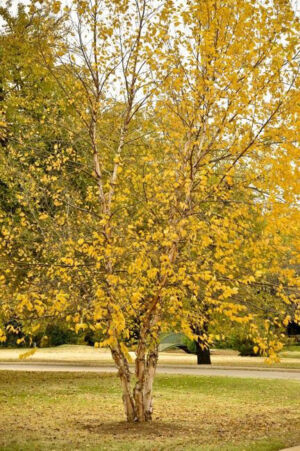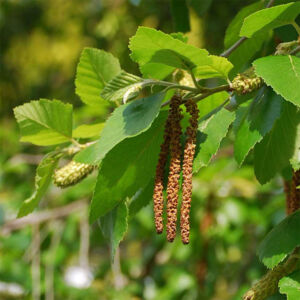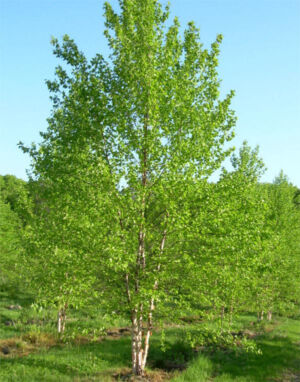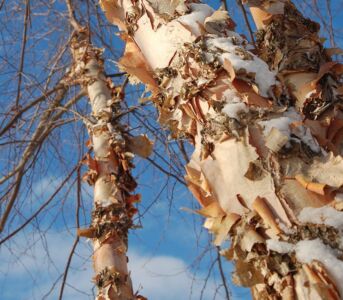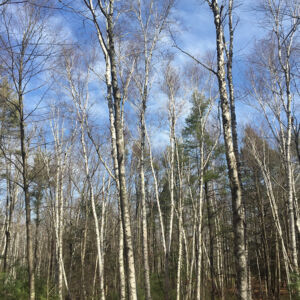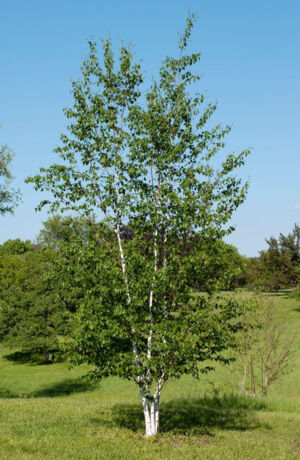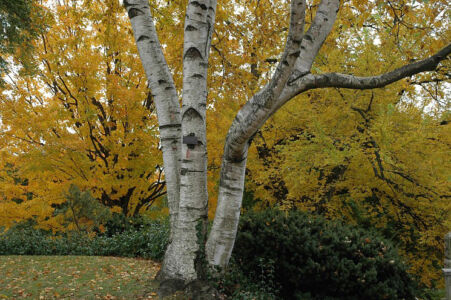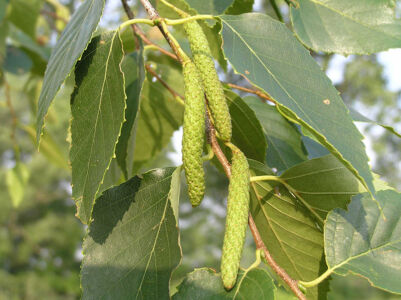River Birch- Betula nigra
Description
General: A pyramidal maturing to rounded deciduous tree that’s usually multi-stemmed or with several large, arching branches low to the ground. Grows 40-60’
Leaves: Alternate, simple, wide and sharp pointed, 1 to 3” long. Medium to dark green in the summer changing to yellow in the fall.
Bark: Branches greater than 2” in diameter exhibit exfoliating bark in papery sheets exposing the inner bark colors that range from gray, salmon, reddish, to cinnamon brown.
Flowers: 2 to 3” long dark brown catkins on male trees and upright greenish catkins on females.
Fruit: small nutlet born from the cartkins, ripening in the spring.
Attributes: Specimen tree for lawns, parks, golf courses, estates and campuses. Especially suited for wet areas, ponds, streams, or low spots.
Culture
Hardiness: Zones 3-9.
Growing Conditions: Prefers moist, fertile and acid soils in part shade.
Maintenance: River birches are very disease resistant and are practically immune to bronze birch borer, which kills many other birch species. They can develop leaf spot and are susceptible to aphids.
Transplanting: Easily transplanted to moist areas.
Our Experience
Experience at Great Hill
While we don’t currently feature river birch on the hill, we hope to in the future. River birch are an ideal four season specimen tree for the landscape, especially in wet areas.
Paper Birch- Betula papyrifera
Description
General: A single or multistemmed tree thats pyramidal in its youth, maturing to oval or rounded at maturity. Grows 50 to 70’.
Leaves: Alternate, simple and ovate, 2 to 4.” Dark green in the summer changing to yellow in the fall.
Bark: Chalky white and peeling into paper like strips revealing orange brown inner bark.
Flowers: Catkins, yellow brown male flowers up to 4” long, and female catkins are erect and green 1 to 2”.
Fruit: Small nutlet born from the cartkins.
Attributes: A tree for parks, estates and large areas. Especially stands out when planted amongst evergreens.
Culture
Hardiness: Zones 2-6.
Growing Conditions: Soil adaptable and does better in colder climates. Prefers full sun. Not tolerant of pollution.
Maintenance: Bronze birch borer, leaf miner, aphids.
Transplanting: Easily transplanted to well draining soil.
Our Experience
Experience at Great Hill
We feature paper birch both at the front of the main house on great hill, as well as throughout the woodline on property. Our specimen is old, and we are experiencing some dieback, but it is still highly ornamental in bark and fall color. We treat our birch with a soil systemic to help prevent the development of bronze birch borer.

